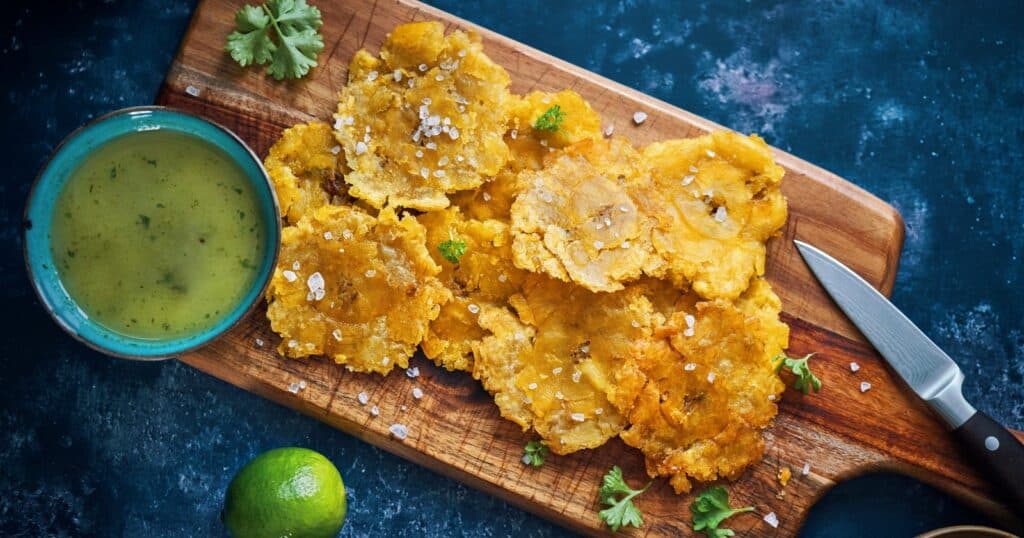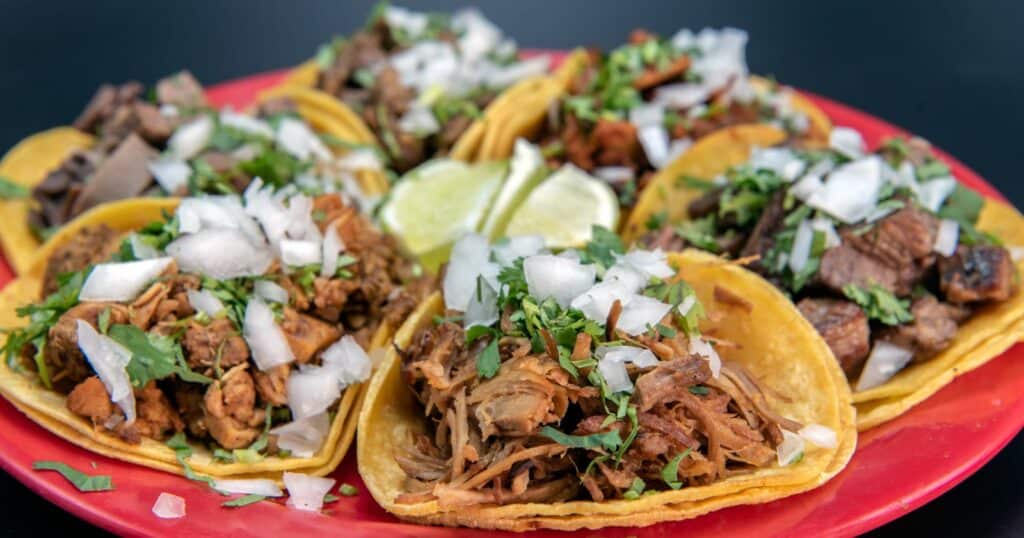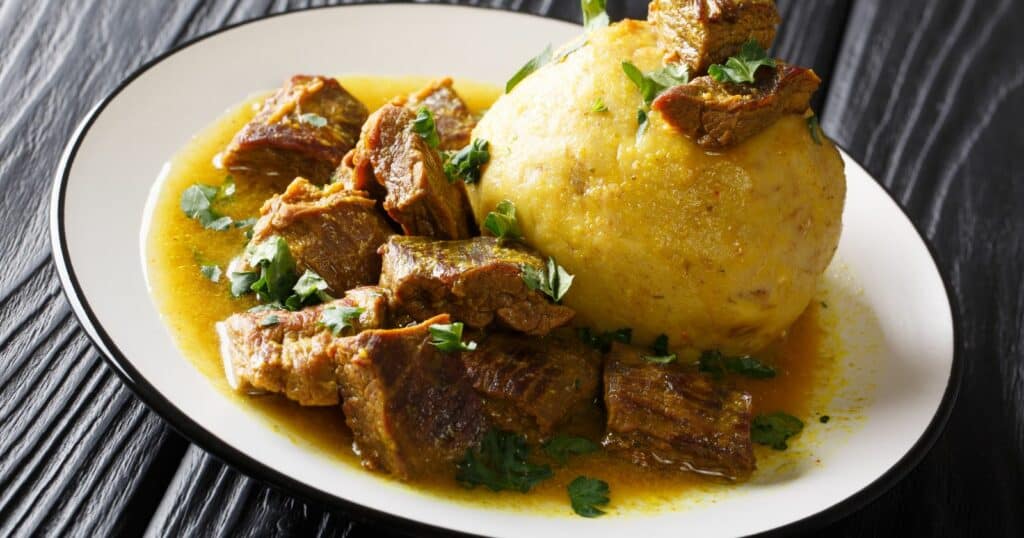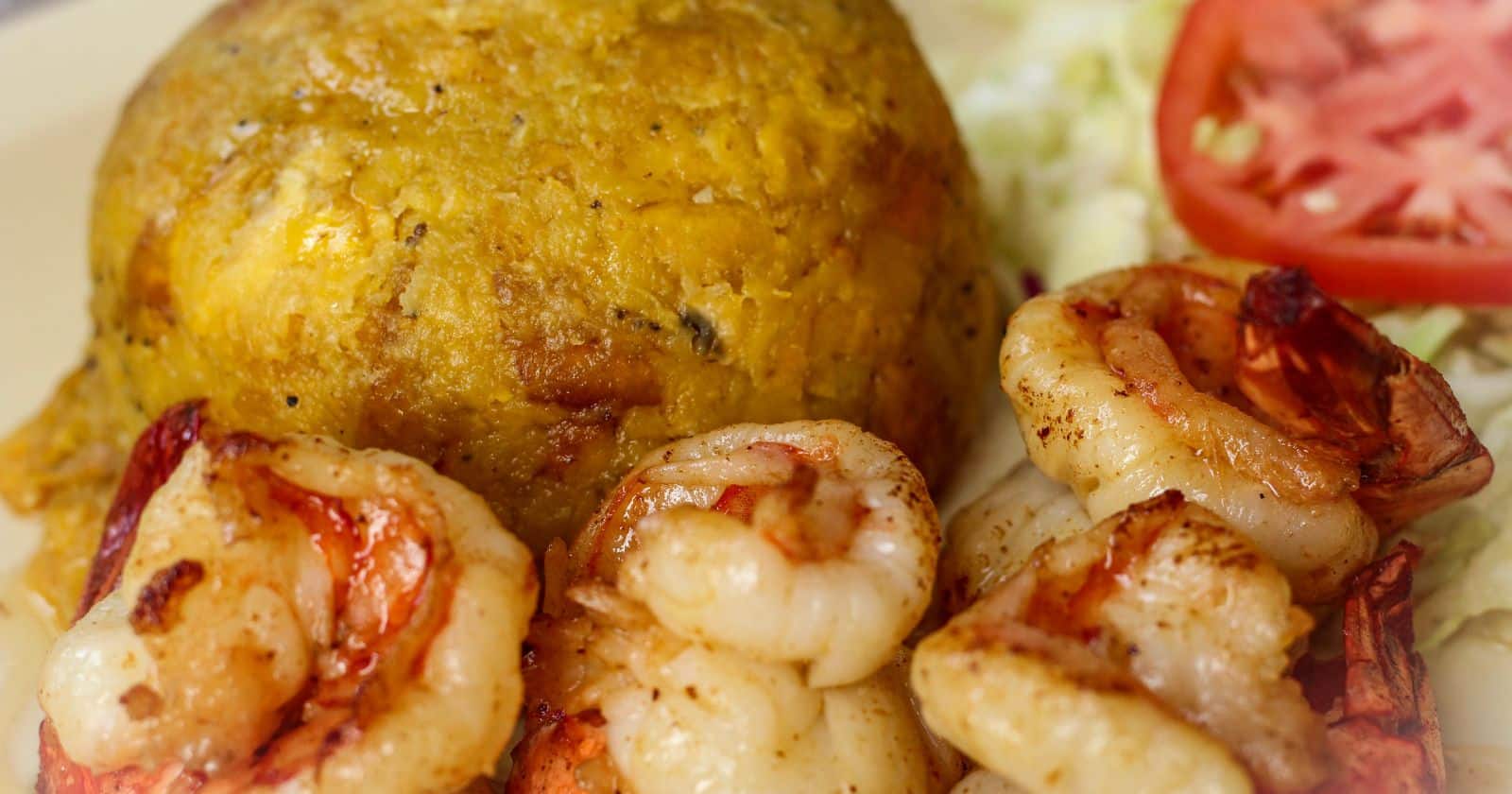Have you ever wondered what makes Puerto Rican and Mexican food so distinct? As a fellow food lover, I’m sure you’ve noticed that while both cuisines share some key ingredients, their flavors and dishes differ quite a bit.
In this complete guide, I’ll walk you through the major differences and a few surprising similarities between these two beloved Latin American cuisines. You’ll learn about their cultural origins, core ingredients, signature dishes, cooking techniques, and more.
Get ready to gain a deeper appreciation for the complex histories and vibrant flavors that make Puerto Rican and Mexican cuisine so crave-worthy!
Cultural Origins and Influences
To understand what makes these cuisines unique, you first need to look at where they come from. Both Puerto Rican and Mexican food reflect a mosaic of cultural influences over time.
The Blending of Cultures in Puerto Rican Cuisine

Puerto Rican food, also called Boricua cuisine, originates from a creolized blend of indigenous Taíno, Spanish, and African cultures.
The native Taíno people, who originally inhabited the island, contributed cooking methods like roasting, grilling, and boiling. When Puerto Rico became a Spanish colony in the late 15th century, Spanish colonizers brought key ingredients like rice, olives, wheat, garlic, and onions.
Later, African slaves and laborers imported by the Spanish added their own touches like plantains, yucca, and certain spices. This intermingling created the unique fusion cuisine we know today.
Mesoamerican Roots Run Deep in Mexican Food

Mexican cuisine has even older indigenous roots, stemming from ancient Mesoamerican civilizations like the Aztecs and Mayans.
Staple ingredients like corn, beans, squash, tomatoes, and chile peppers arrived on the scene thousands of years ago. When Spanish colonizers landed in Mexico in the early 1500s, they added rice, wheat, beef, pork, dairy, and herbs to the native pantry.
This combination resulted in the bold, complex flavors that define authentic Mexican cooking today.
Core Ingredients Make Each Cuisine Distinct
Now let’s dive into the ingredients that give Puerto Rican and Mexican food their characteristic tastes. While there is some crossover, there are also notable differences.
Puerto Rican Pantry Staples
A few ingredients you’ll find in just about every Puerto Rican kitchen include:
- Sofrito – A flavor base of chopped and sautéed aromatic vegetables and herbs like garlic, onions, peppers, cilantro, and culantro.
- Plantains – Starchy, savory fruits that can be fried, mashed, boiled, or roasted.
- Yucca – Also called cassava or manioc, a starchy tuber used in many dishes.
- Rice – An essential grain flavored with sofrito and spices.
- Beans – Kidney, pinto, and white beans often stewed or served with rice.
- Pork – The most widely eaten meat, prepared in many ways like stewing, roasting, and frying.
- Chicken – The second most popular protein, often stewed or roasted.
- Beef – Less common than pork or chicken but still used in stews, skewers, and some fried dishes.
- Seafood – An abundance of fresh fish like red snapper and mahi-mahi, as well as shellfish.
- Tropical Fruits – Pineapple, guava, passionfruit, and mango add sweetness.
Go-To Mexican Ingredients
In a standard Mexican kitchen, you’re likely to find:
- Chile peppers – Ancho, jalapeño, poblano, and chipotle peppers add heat and smoky depth.
- Beans – Most often pinto, black, or kidney beans, used in tacos, enchiladas, soups, stews, and sides.
- Corn – A ubiquitous grain consumed as tortillas, tamales, or mixed with beans.
- Tomatoes – A crucial ingredient for salsas, sauces, soups, stews, and other dishes.
- Avocados – Rich, creamy fruits used in guacamole, tacos, sandwiches, and more.
- Onions and garlic – Fundamental aromatic vegetables used across the cuisine.
- Cilantro – A popular fresh herb used as a garnish and seasoning.
- Limes and lemons – Bright citrus fruits that add acidity and flavor.
- Beef and pork – Grass-fed beef and pork are common meats.
- Chicken – Typically stewed, grilled, or shredded for tacos and fillings.
- Seafood – Fish like tilapia, snapper, tuna, and shrimp are widely eaten, especially near coasts.
Signature Dishes Showcase Regional Flavors
Now let’s explore some of the iconic national and regional dishes that define Puerto Rican and Mexican cuisine. This overview will give you a mouthwatering preview of each cuisine.
Puerto Rican Classics

Some beloved Puerto Rican specialties around the island include:
- Mofongo – Mashed, fried green plantains mixed with garlic, olive oil, and pork cracklings.
- Arroz con gandules – Rice with pigeon peas seasoned with sofrito and pork.
- Lechón asado – Savory roast pork with crispy skin, often served whole.
- Sancocho – A hearty meat, tuber, and plantain stew, similar to a soup.
- Alcapurrias – Fried green banana fritters stuffed with ground beef.
- Pionono – Sweet mashed plantains rolled with ground beef, chicken, or cheese and baked.
- Tembleque – A creamy coconut pudding dessert.
- Flan – Classic crème caramel custard.
Regional variations also abound, like savory arroz con pollo (chicken and rice) in the north and seafood asopao stew in the south.
Can’t Miss Mexican Specialties

From street food to celebratory fare, every Mexican region boasts iconic dishes:
- Tacos – Foldable flatbread made from corn or wheat tortillas filled with meats, cheese, beans, salsa, cilantro, and more! Toppings vary by region.
- Tamales – Masa harina dough with a savory filling like meats, cheese, or chilies, steamed inside a corn husk or banana leaf.
- Tortas – Mexican-style sandwiches layered with beans, cheese, avocado, chilies, onions, and different meats like milanesa (breaded cutlet) or grilled steak.
- Mole – Ancho and mulato chilies, spices, nuts, seeds, and chocolate create this iconic, nuanced sauce. It comes in many styles like the classic mole poblano from the state of Puebla.
- Pozole – A chunky soup bursting with hominy corn, meat, and chili pepper broth. Topped with radish, lime, onion, and oregano.
- Chiles en nogada – A festive dish of poblano peppers stuffed with meat, dried fruit, spices, and nuts, topped with a creamy walnut sauce and pomegranate seeds, representing the colors of the Mexican flag. Originally from Puebla.
- Churros – You can’t forget this beloved fried-dough dessert rolled in cinnamon sugar!
Cooking Techniques Vary Greatly
Now that you know the core ingredients and specialties, let’s look at how they all come together through the cooking techniques used in each cuisine.
Puerto Rican Cooking Methods
Some traditional Puerto Rican cooking techniques include:
- Guisar or rehogar – A slow sauté to build flavor, similar to making a sofrito.
- Sofrito – Mixing and sautéing aromatics like garlic, onions, and peppers as a flavor base.
- Adobo – A wet rub blend of garlic, oregano, salt, pepper, and olive oil for meats.
- Asopao – Slow-cooking meats or seafood in a broth seasoned with sofrito.
- Pilar – Bruising herbs and spices in a mortar and pestle to release oils and aromas.
- Fritura – Deep-frying in hot oil, used for alcapurrias, bacalaítos fritos (cod fritters), and more.
- Asar – Roasting meat or vegetables over an open flame or in an oven. Plantains are often roasted this way.
- Hervir – Boiling ingredients like root vegetables, green bananas, and yucca.
- Saltear – Pan-frying ingredients in a small amount of hot oil.
Stews called guisos or asopaos are essential to Puerto Rican cooking. Chicken stews and rice dishes flavored with sofrito are especially beloved.
Mexican Cooking Techniques
In an authentic Mexican kitchen, you’ll see techniques like:
- Asar – Roasting chilies, tomatoes, onions, garlic, and meat on a comal griddle or grill.
- Cocer – Boiling beans, corn, meat, and vegetables.
- Freír – Quick pan- or deep-frying tortillas, meats, or chilies.
- Guisar – Slow simmering meats and vegetables to blend flavors.
- Hervir – Boiling ingredients, especially to cook beans, corn, and soups.
- Moler – Grinding ingredients, especially in a molcajete mortar and pestle to make salsas and moles.
- Saltear – Quickly frying aromatics in a bit of oil to start sauces, moles, or fillings.
- Cocer al vapor – Steaming tamales wrapped in corn husks or banana leaves.
Salsas and moles rely on grinding chilies, seeds, and spices into complex pastes. Frying tortillas and meat while steaming and boiling beans, rice, and soups happens daily in most homes.
Regional Variations Run Deep
Mexican and Puerto Rican cuisine vary greatly by region based on local crops, cultural mixes, and traditions. This quick overview summarizes a few key regional differences.
Puerto Rico’s Culinary Regions
Some regional Puerto Rican differences include:
- Northern coast – Abundant starchy root vegetables and pigeon peas influence rice dishes and asopao stews.
- Eastern region – Daily fresh seafood like red snapper and mahi-mahi inspires simple fish and coconut rice recipes.
- Central region – The capital and south-central zone features diverse influences like criollo stews and French-inspired roasts.
- Western region – Plantains take the spotlight here, used in mofongo, alcapurrias fritters, and beyond.
In general, pork and plantains are eaten island-wide. But more rice, seafood, and root vegetables grow in the north, while the south favors beans and beef.
Mexico’s Regional Highlights
With over 40 recognized regional cuisines, here’s just a taste of Mexico’s culinary diversity:
- Northern states like Chihuahua, Durango, and Nuevo León favor beef and cheese dishes like machacado (dried beef), queso fundido (melted cheese), and discada (mixed meats).
- Central Mexico is the home of mole poblano and chiles en nogada, with corn, beans, and chilies as staples.
- Western states like Jalisco feature fresh seafood ceviches, grilled meat dishes, and tequila cocktails.
- Yucatán Peninsula cuisine has Mayan roots, with cochinita pibil (citrus-marinated pork), relleno negro (chilies stuffed with meat in a charred sauce), sopa de lima (lime soup), and habanero salsas.
- Oaxaca boasts incredible moles, tlayudas (oversized tortillas), chapulines (chilies stuffed with fried grasshoppers), and mezcal cocktails.
Lesser Known Dishes Showcase Creativity
Beyond the classics, Puerto Rican and Mexican chefs keep innovating. Here are some lesser known dishes that display each cuisine’s creativity and diversity:
Unexpected Puerto Rican Dishes
- Arepas de yuca – Fried or toasted yucca flour patties stuffed with cheese, chicharrón, or shrimp.
- Empanadillas – Small pastries stuffed with lobster, conch, beef, or cheese then baked or fried.
- Pasteles en hoja – Root vegetable and meat wraps cooked in banana leaves rather than a pasteles dough wrapper.
- Arroz con jueyes – Rice with whole cooked Caribbean land crabs, their sweet meat and orange fat adding richness.
- Frituras de bacalao – Crispy fried codfish fritters seasoned boldly with adobo and sofrito.
Innovative Mexican Bites
- Tamales oaxaqueños – Banana leaf-wrapped black mole and chicken tamales, rich with chilies and chocolate.
- Tostadas de tinga – Fried tortillas stacked with tinga (spiced shredded chicken) and garnishes like avocado, queso fresco, and lime crema.
- Pambazos – Soft white bread rolls soaked in a guajillo chili sauce then filled with potato, chorizo, lettuce, cheese, and cream.
- Molotes – Thick, triangle-shaped corn masa pockets stuffed with cheese, potatoes, chorizo, beans, or chicken then griddled until crisp.
- Gorditas – Round, fried corn cakes split open and filled with meat, cheese, salsa, vegetables, or beans.
Planning a Puerto Rican or Mexican Feast
Armed with all this detail on the ingredients, dishes, techniques, and innovations that make Puerto Rican and Mexican cuisine unique, you’re ready to start planning your own fiesta!
Here are some key tips to create an unforgettable spread:
- Focus on signature ingredients from sofrito and chilies to plantains and fresh fish.
- Mix traditional dishes like mofongo or enchiladas with lesser known regional plates.
- Incorporate some modern takes like fusion tacos or arroz con pollo arancini.
- Feature refreshing aguas frescas, margaritas, beer, and rum cocktails to drink.
- Have fun with music, decorations, and activities that highlight the cuisine’s origins.
The joy of food brings people together across cultures. So embrace this guide as your passport to exploring the rich diversity of Puerto Rican and Mexican cuisine. From street food to fine dining, you’ll gain a deeper admiration for these flavorful culinary treasures!





